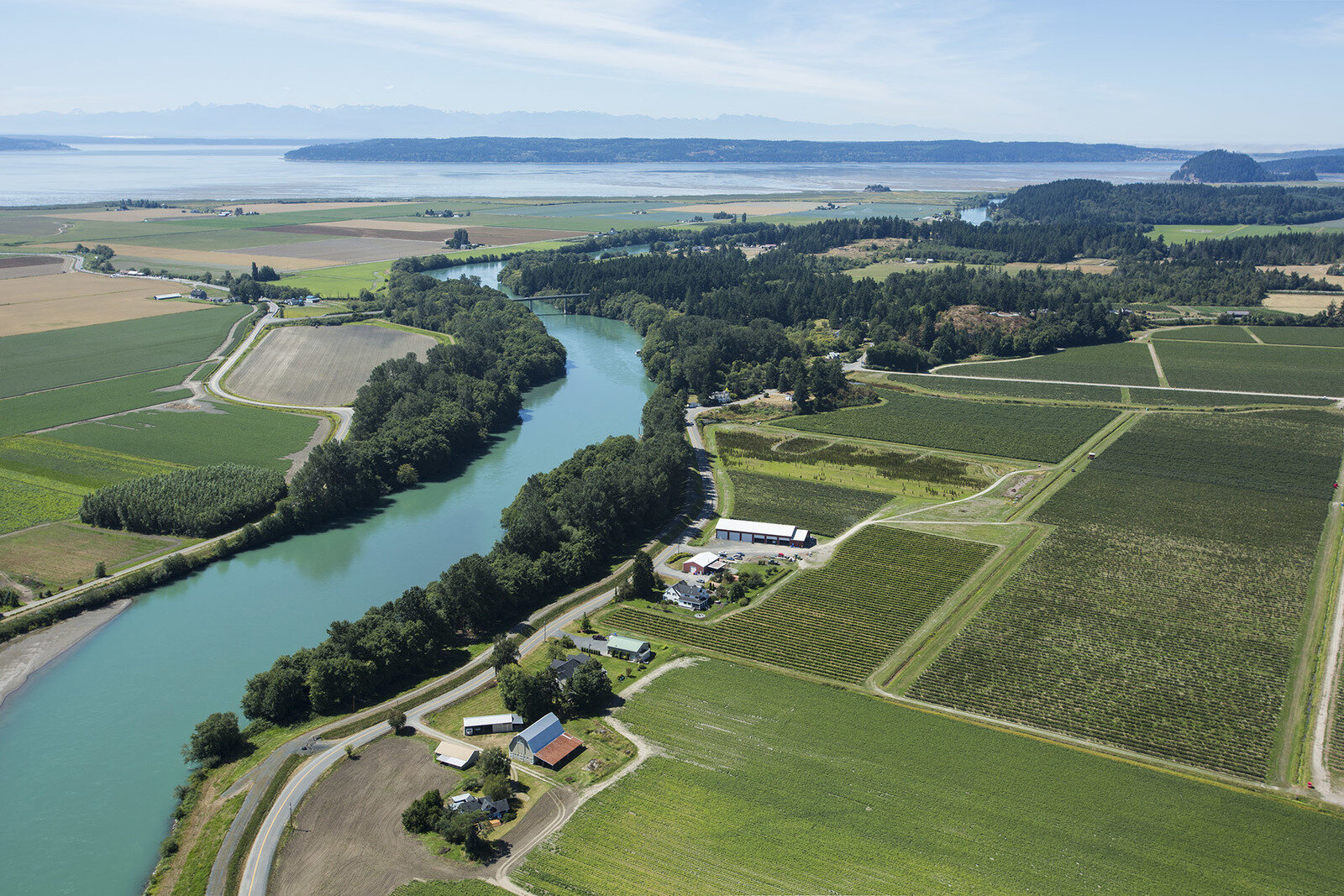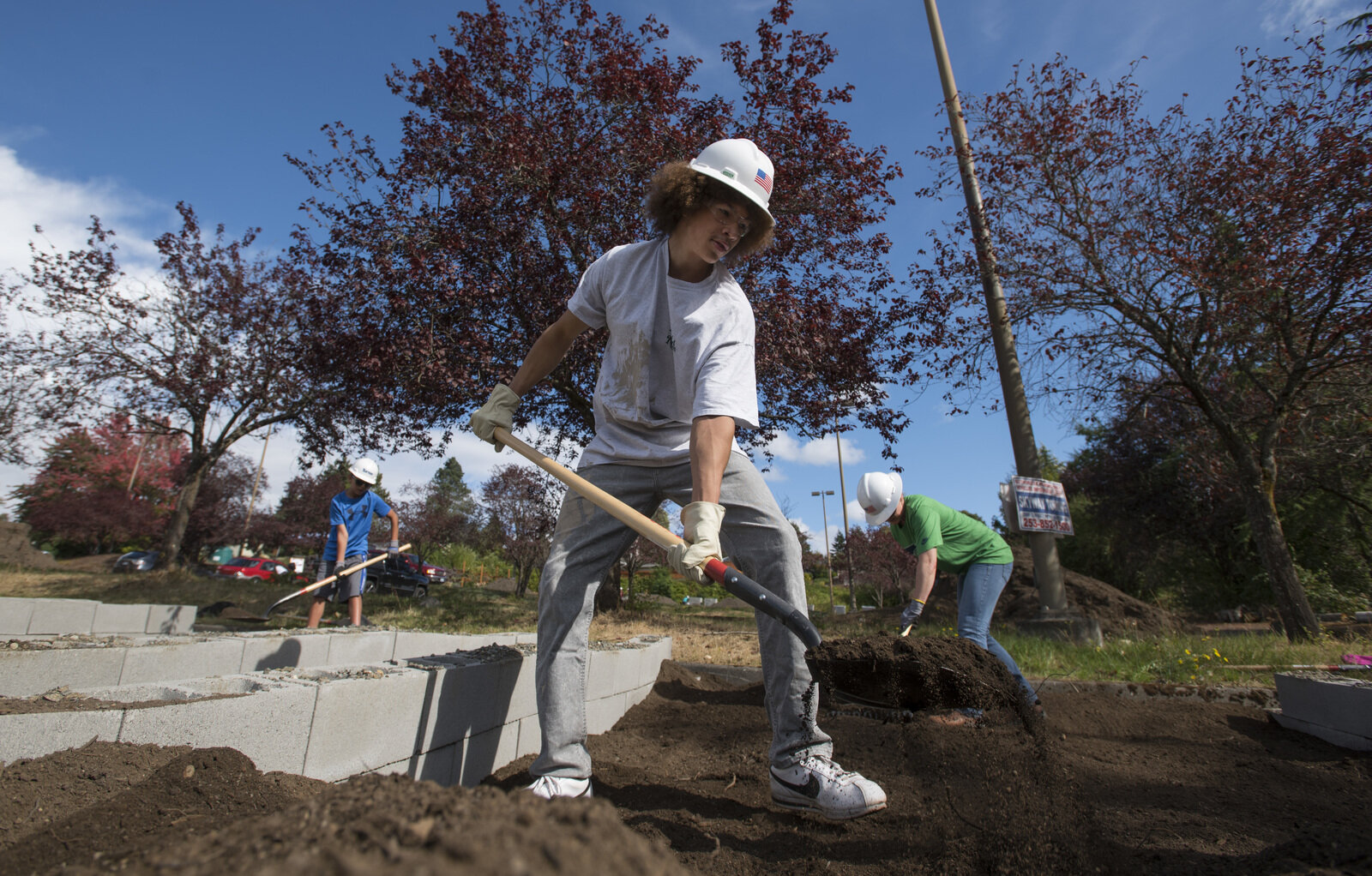Returning to the territories of his First Nation, the Ahousaht people of Clayoquot Sound in British Columbia, the first thing Tyson Atleo always hears is, “Welcome home, it’s nice to see you here.”
That sense of being truly home deepens when Atleo, the son of an Ahousaht hereditary chief, paddles up the blue-green rivers where salmon spawn, steelhead laze in cold, deep pools and eagles rest in the branches above. Those watersheds “are like the arteries of this place,” he said, “that’s where we get our life from.”
Out on the beaches, you might see wolf tracks in the sand or spot a grey whale in the surf. “You get this westerly breeze in your face, fresh sea air, then turn around and cross this threshold into Sitka spruce and old-growth forest,” Atleo said. “And whoosh, you're bombarded with green and this infinite stimulus, it's infinitely complex.”
Clayoquot Sound sustains the last old-growth forests on Vancouver Island and is a critical piece of the largest intact coastal rainforest on Earth known as the Emerald Edge. Spanning 100 million acres across Alaska, British Columbia and Washington, the Emerald Edge supports as much biodiversity as its tropical counterparts and more than 50 Indigenous peoples and myriad communities.
“Our people and our culture are being grown by the lifeblood of this place, and being informed and shaped by it,” Atleo said. “So it’s more than a home. It’s a caregiver, it’s a teacher.”
Community-Centered Conservation
How can The Nature Conservancy work at the scale of the massive Emerald Edge ecosystem? That’s the question we asked ourselves about a decade ago. The answer, says Emerald Edge Director Eric Delvin, rested with the local and Indigenous peoples whose lives are intertwined with these lands and waters.
“The most effective approach is to invest in the people who have lived there since time immemorial and know how to take care of it,” Delvin said. “The research, as well as our own experience, tell us this works.”
That experience includes nearly 15 years supporting the development of the Great Bear Rainforest agreement in the heart of the Emerald Edge. First signed in 2008 and finalized in 2016, the historic agreement among 27 First Nations and the British Columbia and Federal governments protects 9 million acres of forest from logging and requires sustainable practices on millions more. The Conservancy raised $39 million towards a $120-million endowment to support the capacity of these nations to manage their lands and build sustainable economic opportunities.
Today in the Great Bear Rainforest, member nations are stopping pipelines from crossing their territory and enforcing new regulations — prompted by indigenous knowledge — prohibiting grizzly bear trophy hunting. First Nation communities have created 45 new businesses and 767 new permanent jobs.
“What we see,” Delvin said, “is that if you make sure communities that really care about a place have livelihoods and management authority, you’re going to have really good conservation outcomes.”
Also read: Beyond 60: The Nexus of People & Nature in the Central Cascades
Matching Conservation with Tribal Priorities
The success of the Great Bear Rainforest agreement prompted other First Nations in the Emerald Edge to reach out to the Conservancy.
“Because of the leadership the Conservancy had shown in the Great Bear Rainforest agreements,” Atleo said, the hereditary chiefs invited us into his community about a decade ago.
“Our leaders in Clayoquot Sound recognized that those agreements allowed the nations in the central coast to conserve and protect some of their land base... while also generating economic value from that conservation work,” said Atleo, who helped lead the development of his nation’s vision for their territory. He has since become the Economic Development Lead for our Emerald Edge and Canada programs.
Early in the partnership, the Conservancy provided small capacity grants to help the Ahousaht stand up a stewardship office and support community conversations around people’s values for the land and how those could be supported.
“We knew we would not be successful if we went in and said, ‘We want to protect this for you,’” Delvin said. “We needed to go in when we were invited in and really support the capacity of each nation to envision a different future.”
At one meeting, an Ahousaht chief rolled out an old map covered with hundreds of dots marking important points in their territory, Delvin recalls. The Conservancy pulled that information into a digital map with all of the place names in the Ahousaht language, which the nation then shared in meetings with the provincial government.
“Through that process, the Ahousaht were able to more effectively communicate to the Provincial government where culturally important places were,” Delvin said.
As a result, the final maps captured places that were culturally valuable, as well as those scientists had identified as ecologically important. “So they were fully endorsed by the community,” Delvin said.
In addition to the Ahousaht, the Conservancy worked with the Tla-o-qui-aht and Hesquiaht First Nations, whose territories also lie in Clayoquot Sound. The three nations are now negotiating with the British Columbia government to implement their conservation visions, which include permanent protection for about 300,000 acres of forest. The Conservancy is helping ensure the nations have the expertise and capacity to engage effectively in those talks.
Just as important, says Atleo, the nations’ land use visions ensure that they benefit from the area’s natural resources. Clayoquot Sound’s growing tourism economy has left out First Nations, with on-reserve household income roughly half that of other communities in the area. “We can’t expect people to want to conserve while staying in poverty,” Atleo said.
To that end, the Conservancy is raising $16.5 million toward an endowment to support sustainable stewardship funding in Clayoquot Sound, such as hiring natural resource managers, reconnecting youth to their territories and fostering sustainable businesses.
In the Great Bear, investments made possible by that earlier endowment are coming to fruition. “For kids now in college or coming back from college,” Delvin said, “there's a place for them and an economy built around stewardship, fisheries and tourism, and this healthy dependence on the natural resources.”
The Great Bear endowment is also providing communities in that region with “a bit of a buffer” during the economic downturn caused by the coronavirus pandemic, Delvin pointed out. Once in place, the Clayoquot agreements and endowment will help those communities be more economically resilient too.
We’re also ensuring that Indigenous peoples across the Emerald Edge — and beyond — have opportunities to learn from each other.
After conversations with their counterparts in British Columbia, Native Alaskan leaders decided to start their own stewardship endowment and have pledged $10 million. Meanwhile, leaders from Emerald Edge communities traveled to Australia to meet with indigenous peoples there, and they came away with a social media strategy that contributed to British Columbia’s trophy hunting ban.
“The greatest thing we’ve learned in the Emerald Edge program is the power of bringing people together,” Atleo said. “Providing a safe space for people to express themselves, build trust, feel connected to their peers — this is where real learning happens, and where we can see some significant, scaled impact.”
Trust as an Essential Element
Through its work in the Emerald Edge, the Conservancy has learned a great deal about how to build good working relationships with indigenous communities. But it’s not always easy, both Atleo and Delvin acknowledge.
“It's very hard for people to imagine a reality that is different from what has been offered for the last half a century, which is, ‘We will take from you and not give anything back — we will take the timber, we'll take the fish,’” Atleo said. “So words like ‘protection’ are scary to those communities.”
We can’t forget that past, Atleo emphasized. “Sixty years ago, the intent was to oppress that [indigenous] way of thinking of being on the planet,” he said. “Yet here we are in 2020 celebrating the potential for indigenous cultures to inform the rest of the world how to care for natural systems.
“And that’s why building trustful relationships in indigenous communities is so important,” he said. “Washington is a leader in showing how to do that across the Conservancy.”
In Washington and across North America, our evolving partnerships with indigenous communities have spurred us to think differently about all of the lands we own and manage, says Director of Conservation James Schroeder.
Places that we protected a few decades ago for their habitat value or unique geology have been important to tribes forever. Ancestral lands and waters were integrally represented and reflected in systems of governance, society and spirituality; yet tribes in many cases were forced to give them up. These spaces have provided not only food and sustenance for generations, but also community and identity.
Today, Schroeder said, the Conservancy is taking a closer look at how protecting ecological values can also protect cultural and social values. We’re also exploring opportunities to return ownership and management of lands we hold to tribes.
“How do we support tribes to exercise their treaty rights and have access to the resources they've been promised?” Schroeder said. “Because many of those resources can come from properties that we manage and steward.”
“We can’t achieve our long-term conservation goals of healthy lands and waters and a livable climate without the support and knowledge of indigenous communities.”





























